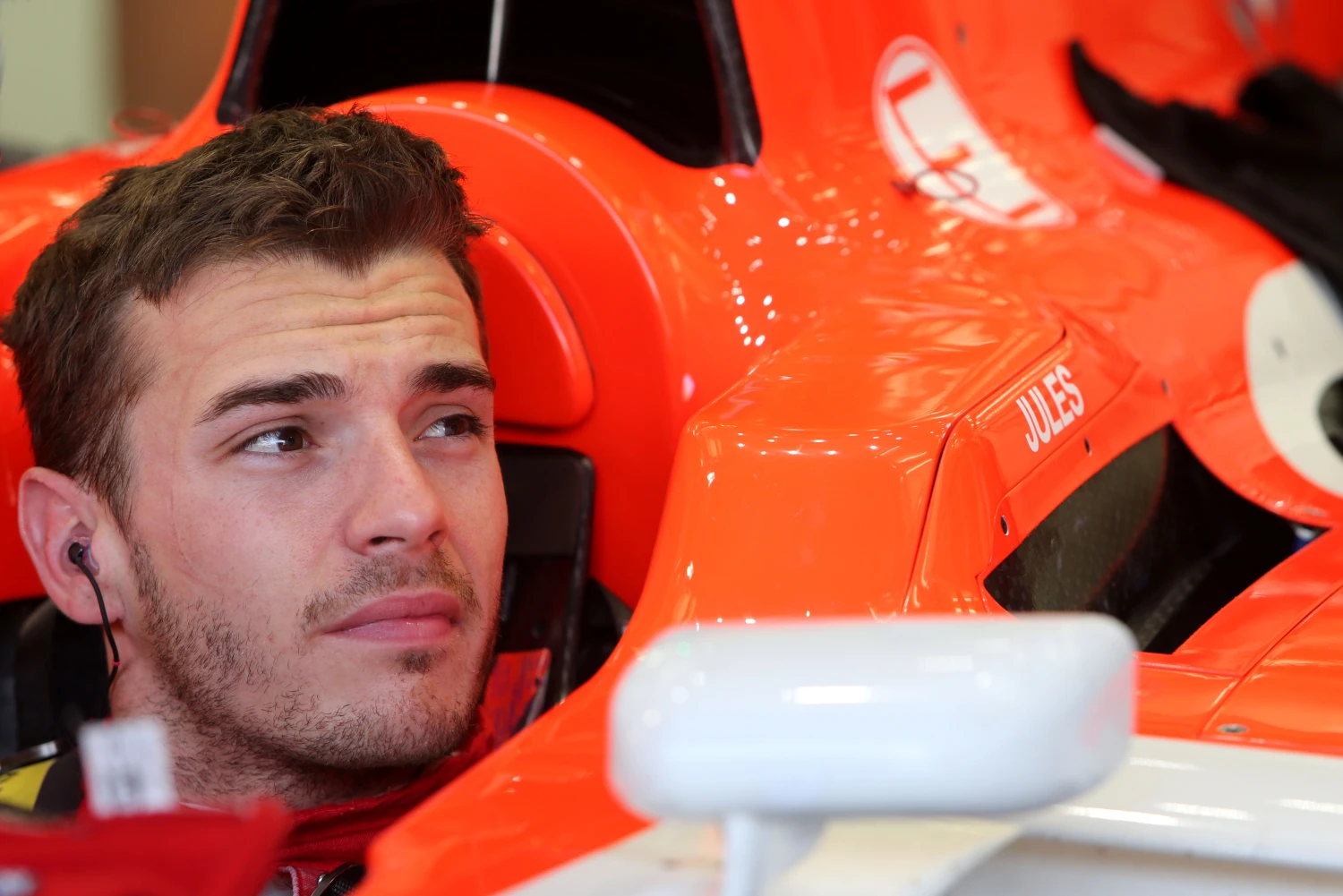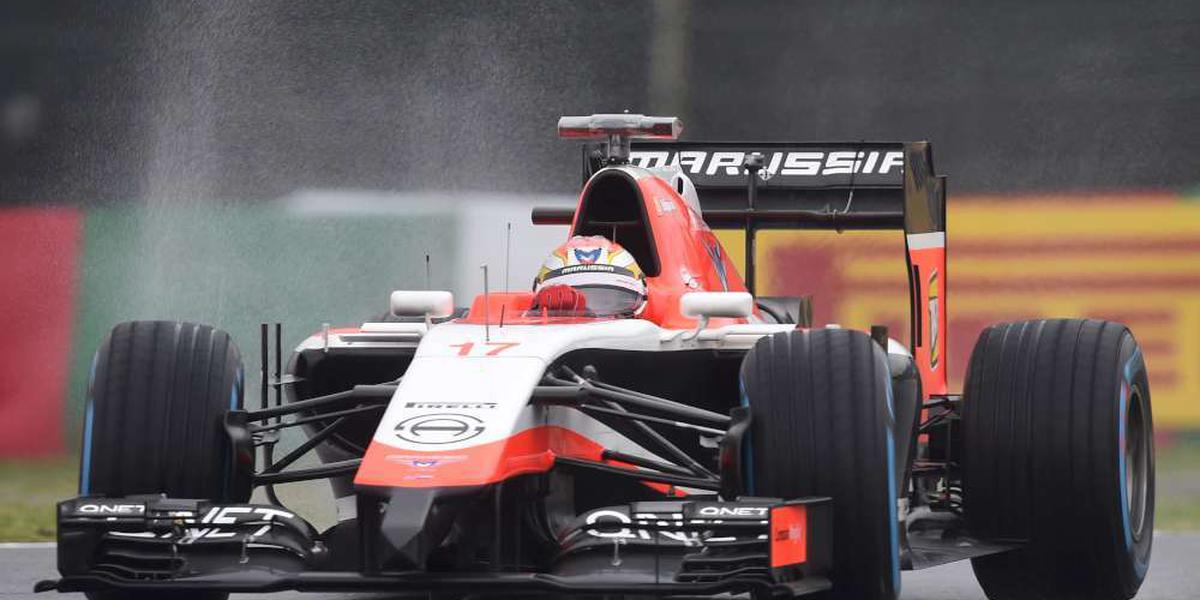Jules Bianchi, ten years on: in the eyes of Charles Leclerc, the memory of a driver and the legacy of F1 safety
Ten years after his death, Jules Bianchi is still remembered as an unforgettable figure in F1. His memory lives on through the moving recollections of Charles Leclerc, his godson, and the safety transformations he inspired in Formula 1.
Ten years ago, on July 17, 2015, the Formula 1 world held its breath, then mourned one of its brightest hopes, Frenchman Jules Bianchi. His tragic death, which came nine months after a terrible accident at the 2014 Japanese Grand Prix, marked more than just a sporting tragedy: it was the catalyst for a new and unprecedented era in safety, now protecting drivers who continue to chase their dream.
Jules, a native of Nice, was a brilliantly talented driver and member of the prestigious Ferrari Driver Academy. His future with the Scuderia seemed assured. The most memorable moment of his all-too-short career was undoubtedly the 2014 Monaco Grand Prix, where he achieved the unthinkable: scoring the very first points for the Marussia team in Formula 1. A feat which, even for a modest team, underlined his immense skill and confirmed his status as a future star.
However, this promising run was brutally interrupted on October 5, 2014, at the Suzuka circuit. In track conditions made treacherous by pouring rain, his Marussia, in the absence of the virtual safety car (VSC), left the track and collided with a tow truck responding under yellow flags. Jules Bianchi suffered severe diffuse brain damage and struggled for nine long months before passing away at the age of 25. To this day, he remains the last Formula 1 driver to lose his life as a result of injuries sustained during a Grand Prix. His loss is a painful reminder of the fragility of life in the sport and the need for constant vigilance in safety matters. Ten years on, Jules’ family and friends still remember him with fondness.
Jules Bianchi as seen by Leclerc
Among those who perpetuate his memory, Charles Leclerc occupies a special place. The Monegasque, now a Scuderia Ferrari driver, wasn’t just Bianchi’s godson: he was his protégé, his childhood friend, and a privileged witness to his personality.
In his memories, Jules is not first and foremost a driver, but a benevolent big brother. “The first images I have of him are not racing images, but moments of life,” Leclerc confides on the F1 website. As a child, he admired this young man eight years his senior, inseparable from his own older brother. It was in this family cocoon that their bond was forged, between games, complicity and memories shared around the karting circuits.
Leclerc fondly recalls their first sessions on the rental track run by Jules’ father. He was just a little boy, too young to race, but already allowed to race with the big boys. Those hours spent waiting for the track to close so they could ride privately have become precious memories, full of carefree passion.
But behind the friendship also lay an inspirational figure. Jules was driven by a fierce competitiveness, which he transposed into everything from board games to amateur sport. “He could spend months training just not to lose a game of squash,” recalls Leclerc. This stubbornness had a profound effect on the young Charles, who became a formidable perfectionist in his own right.
Beyond the athlete, it’s the man that Leclerc admires to this day. A sunny, generous, funny character, sometimes unpredictable but always sincere. “There are people whose kindness you can see in their eyes or their smile, and Jules was one of them,” he says. For Leclerc, Jules wasn’t just a role model: he was a landmark, whose imprint remains vivid every time he settles into his single-seater.
Through Leclerc’s memories, the human dimension of Jules Bianchi reappears with force. But his impact goes beyond the personal. The Suzuka accident also marked a decisive turning point for safety in Formula 1, triggering a series of major reforms.
Safety redefined
Jules’ accident was a real electroshock. The in-depth investigation carried out by the FIA led to major innovations, profoundly transforming safety in Formula 1:
- The Virtual Safety Car (VSC): directly introduced following the Suzuka tragedy in 2015, the VSC neutralizes the race by forcing all drivers to reduce their speed to a predefined threshold. This avoids full-speed arrivals at incident zones, a central feature of the tragic event.
- The Halo device: Although the idea of a cockpit protection system already existed, the nature of Jules’ injury provided the decisive impetus for the adoption of the Halo. This titanium “windscreen”, made compulsory in F1 from 2018, has since proved life-saving, protecting Leclerc in Belgium in 2018 and Romain Grosjean during his spectacular accident in Bahrain in 2020, among others.
- Revised procedures and infrastructure: Guidelines have been introduced for Grand Prix start times to ensure better visibility, especially in bad weather. Recovery vehicle intervention protocols were strengthened, and, specifically at Suzuka, a fixed gantry crane was installed at Turn 7 to avoid the presence of mobile cranes on the trackside.
These measures have not been mere technical adjustments. They have profoundly altered F1’s approach to safety, and Jules’ legacy is evident in every decision that has been taken to avoid another tragedy.
A living memory
As a sign of respect and to ensure that no one forgets, Jules’ number 17 has been retired from Formula 1, a powerful symbolic gesture to mark his place in F1 forever. His family, through the Jules Bianchi Association, continues its vital work of remembrance and support for victims of brain injury, constantly reminding us of the importance of safety.
On this sad anniversary, Jules Bianchi is remembered not only as an immense talent cut down too soon, but also as a catalyst for lasting progress. His tragic death marked a before and an after, forcing Formula 1 to fundamentally rethink the way it protects its drivers. Today, his legacy ensures that every race, every overtake, also resounds as a silent tribute to the man whose tragic fate led to advances that continue, ten years on, to save lives.
Article Source : https://www.motorsinside.com/f1/actualite/37204-jules-bianchi-dix-ans-apres-dans-yeux-charles-leclerc-souvenir-pilote-lheritage-securite-f1.html




